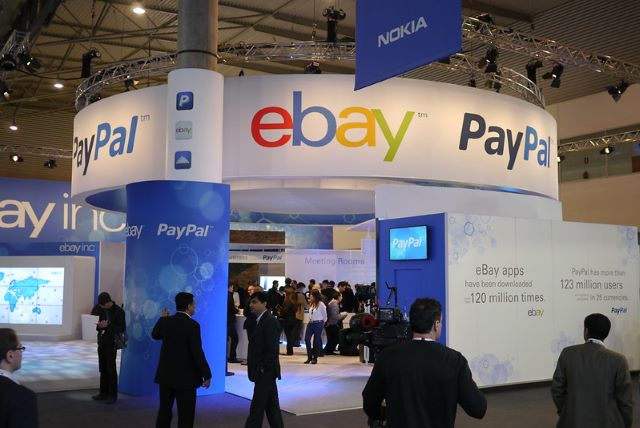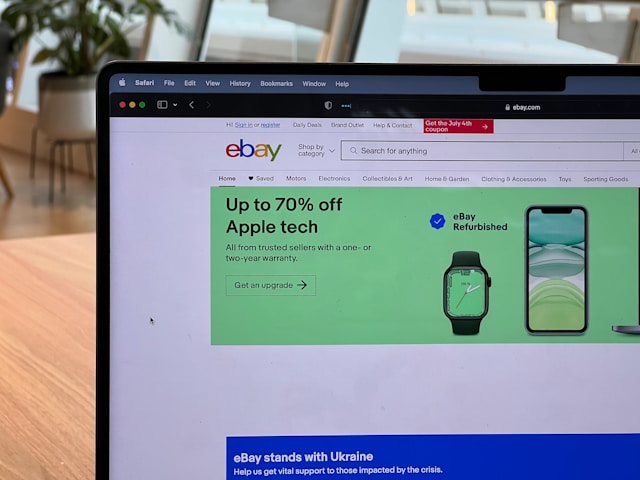eBay, founded in 1995, has grown from a small online auction site to a global e-commerce powerhouse. Its marketing strategy has played a significant role in this journey, marked by innovative campaigns, a deep understanding of its customer base, and a flexible approach to changing market conditions. For marketing professionals seeking inspiration, eBay offers a compelling case study in balancing tradition with innovation, leveraging data for personalization, and building strong community ties. Let’s explore eBay’s marketing strategy, highlighting key campaigns and insights that can inform and inspire other brands.
Building a Strong Brand Identity
From its inception, eBay positioned itself as a unique marketplace where individuals could buy and sell virtually anything. This concept of an open market was central to its brand identity, emphasizing trust, community, and opportunity. Early marketing efforts focused on creating a sense of excitement and possibility, using slogans like “Whatever it is, you can get it on eBay.” This positioning helped differentiate eBay from traditional retail and other e-commerce platform.

Community and Trust
A critical aspect of eBay’s strategy has been fostering a sense of community and trust among its users. The introduction of the feedback system in 1997 was pivotal. This system allowed buyers and sellers to rate each other, creating a self-regulating community that increased trust and transparency. This move not only enhanced the user experience but also served as a powerful marketing tool, as positive feedback and high ratings became a badge of credibility within the eBay community.
Data-Driven Personalization
eBay’s marketing strategy heavily relies on data analytics to understand customer behavior and personalize the user experience. By analyzing browsing history, search patterns, and purchase behavior, eBay can deliver highly targeted advertising and recommendations. This level of personalization increases engagement and conversion rates, as users are more likely to see products that match their interests.
For instance, eBay’s use of machine learning algorithms helps predict what products users might be interested in, allowing for more relevant product suggestions in emails, on the homepage, and across the platform. This approach has proven effective in keeping users engaged and driving repeat purchases.

Integrated Marketing Campaigns
eBay’s marketing campaigns are known for their creativity and integration across multiple channels. Let’s examine some notable campaigns that demonstrate eBay’s marketing prowess.
“Fill Your Cart with Color”
Launched in 2017, the “Fill Your Cart with Color” campaign marked a significant shift in eBay’s marketing strategy. The campaign aimed to redefine eBay’s brand identity by focusing on the joy of shopping and the diversity of its offerings. Instead of emphasizing the auction aspect, the campaign highlighted eBay as a vibrant, fun marketplace.
The campaign included TV commercials, digital ads, and social media content, all featuring colorful imagery and upbeat music. The messaging centered on the idea that eBay offers something for everyone, allowing users to express their unique tastes and preferences. This campaign was successful in attracting a younger, more diverse audience and revitalizing the brand’s image.
“Better Way to Buy”
The “Better Way to Buy” campaign focused on positioning eBay as a more convenient and reliable alternative to traditional retail. The campaign highlighted the advantages of shopping on eBay, such as competitive prices, a wide selection of products, and buyer protection guarantees. Through a combination of TV spots, online videos, and social media posts, eBay communicated the message that it offers a superior shopping experience.
This campaign also featured real customer testimonials, which added authenticity and credibility. By showcasing satisfied customers sharing their positive experiences, eBay reinforced the message that it is a trusted and reliable platform.
“eBay for Charity”
eBay has long been involved in charitable initiatives, using its platform to support various causes. The “eBay for Charity” program allows sellers to donate a portion of their sales to charity, and buyers can shop for products that support causes they care about. This initiative not only helps charitable organizations but also enhances eBay’s brand image as a company that cares about giving back to the community.
Marketing campaigns for “eBay for Charity” often feature collaborations with celebrities and influencers to raise awareness and drive participation. These campaigns highlight the impact of the donations and encourage more users to get involved, creating a sense of community and shared purpose.
Leveraging Social Media
Social media has become a vital component of eBay’s marketing strategy. The company uses platforms like Facebook, Instagram, Twitter, and Pinterest to engage with its audience, share content, and promote products. eBay’s social media strategy focuses on building relationships with users, providing customer support, and leveraging user-generated content.
User-Generated Content
One of eBay’s most effective social media strategies is encouraging users to share their eBay finds and experiences. By creating hashtags like #eBayFinds and #eBayWin, eBay encourages customers to post photos and stories about their purchases. This user-generated content serves as authentic testimonials and helps build a sense of community among eBay users.
Influencer Partnerships
eBay collaborates with influencers to reach new audiences and promote its products. These partnerships often involve influencers showcasing their favorite eBay finds or creating content around specific campaigns. For example, during the “Fill Your Cart with Color” campaign, eBay partnered with fashion and lifestyle influencers to highlight the diverse range of products available on the platform. These collaborations help eBay tap into the influencer’s follower base and add a layer of authenticity to its marketing efforts.
Seasonal and Event-Based Campaigns
eBay effectively leverages seasonal events and holidays to boost sales and engagement. Whether it’s Black Friday, Cyber Monday, or back-to-school season, eBay launches targeted campaigns to capitalize on these shopping peaks.
Black Friday and Cyber Monday
During these major shopping events, eBay offers significant discounts and promotions to attract bargain hunters. The marketing campaigns for these events include a mix of email marketing, social media promotions, and digital ads. By highlighting limited-time offers and exclusive deals, eBay creates a sense of urgency that drives traffic and sales.
Holiday Campaigns
eBay’s holiday campaigns often feature festive themes and highlight gift ideas for different budgets and interests. These campaigns aim to position eBay as the go-to destination for holiday shopping, offering convenience, variety, and competitive prices. The holiday season also provides an opportunity for eBay to promote its “eBay for Charity” program, encouraging users to make a positive impact with their purchases.
Mobile Optimization
With the increasing use of smartphones for online shopping, eBay has placed a strong emphasis on mobile optimization. The company has invested heavily in developing its mobile app, ensuring a seamless and user-friendly experience for mobile users. Features like personalized recommendations, easy navigation, and secure payment options make the eBay app a preferred choice for many shoppers.
Mobile-First Campaigns
Recognizing the shift towards mobile shopping, eBay has tailored its marketing campaigns to be mobile-first. This approach involves creating content and ads that are optimized for mobile devices, ensuring they load quickly and display correctly on smaller screens. Mobile-first campaigns also leverage features like push notifications to engage users and drive traffic to the app.
International Expansion
eBay’s marketing strategy also includes a strong focus on international expansion. The company has adapted its marketing efforts to suit different regions, taking into account cultural differences, local preferences, and market conditions. This localized approach has helped eBay establish a strong presence in various international markets.
Localized Marketing Campaigns
To resonate with local audiences, eBay creates marketing campaigns that reflect regional tastes and preferences. For example, in markets like India, eBay has tailored its messaging to emphasize affordability and the availability of unique, hard-to-find products. In Europe, eBay has focused on highlighting the convenience of cross-border shopping and the vast selection of products.
Collaborations with Local Influencers
Partnering with local influencers is another key component of eBay’s international marketing strategy. These influencers help eBay connect with local audiences in a more authentic and relatable way. By featuring local influencers in its campaigns, eBay can effectively promote its platform and build trust with new users.
Continuous Innovation and Adaptation
One of the hallmarks of eBay’s marketing strategy is its ability to innovate and adapt to changing market conditions. The company continuously tests new ideas, technologies, and marketing techniques to stay ahead of the competition and meet evolving customer needs.
Augmented Reality (AR) and Virtual Reality (VR)
eBay has experimented with AR and VR technologies to enhance the shopping experience. For example, the company launched an AR feature that allows users to visualize how furniture would look in their homes before making a purchase. By integrating these cutting-edge technologies, eBay aims to provide a more immersive and interactive shopping experience.
AI-Powered Customer Support
eBay uses artificial intelligence (AI) to improve customer support and streamline operations. The company has implemented AI-powered chatbots to assist users with common queries and issues, providing quick and efficient support. This technology not only enhances the user experience but also helps eBay manage its resources more effectively.
Lessons from eBay’s Success
eBay’s marketing strategy offers valuable lessons for marketing professionals looking to draw inspiration from a successful brand. Key takeaways include:
- Building a Strong Brand Identity: Establish a unique and compelling brand identity that resonates with your target audience.
- Fostering Community and Trust: Create a sense of community and trust among your users through transparent practices and customer feedback mechanisms.
- Leveraging Data for Personalization: Use data analytics to understand customer behavior and deliver personalized experiences that drive engagement and conversions.
- Integrated Marketing Campaigns: Develop creative and integrated marketing campaigns that leverage multiple channels to reach and engage your audience.
- Utilizing Social Media and Influencers: Engage with your audience on social media and collaborate with influencers to build authenticity and reach new customers.
- Capitalizing on Seasonal Events: Launch targeted campaigns during seasonal events and holidays to boost sales and engagement.
- Optimizing for Mobile: Ensure your platform and marketing efforts are optimized for mobile devices to meet the needs of mobile-first shoppers.
- Adapting to International Markets: Tailor your marketing strategy to suit different regions and cultures for successful international expansion.
- Embracing Innovation: Continuously innovate and adapt to changing market conditions and emerging technologies to stay competitive.
By adopting these strategies, marketing professionals can create effective and impactful campaigns that drive growth and build lasting connections with their audience. eBay’s journey from a niche auction site to a global e-commerce leader is a testament to the power of strategic marketing and the importance of staying attuned to the needs and preferences of your customers.

